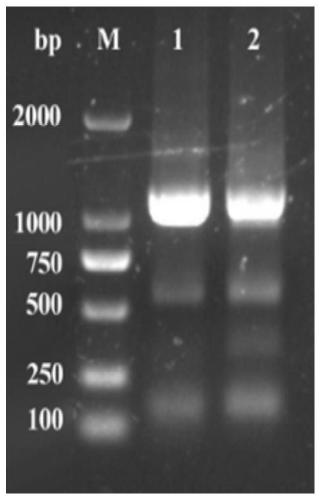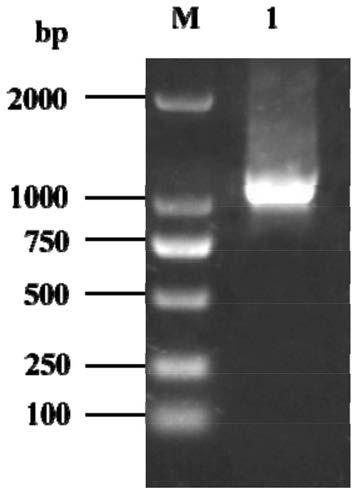Transformation method of lactobacillus brevis
A technology of Lactobacillus brevis and electrotransformation, which is applied in the field of food microorganisms and can solve problems such as inapplicability
- Summary
- Abstract
- Description
- Claims
- Application Information
AI Technical Summary
Problems solved by technology
Method used
Image
Examples
Embodiment 1
[0033] Example 1 Transformation of Lactobacillus brevis 2-34 with plasmid pNZ5319
[0034] (1) Electrotransformation of Lactobacillus brevis 2-34 with plasmid pNZ5319
[0035] 1. Preparation of Competent Cells of Lactobacillus brevis 2-34
[0036] Lactobacillus brevis 2-34 preserved in glycerol tubes was inoculated in MRS liquid medium at 2% inoculation amount, and cultured at 37°C for 12 hours; transferred to MRS liquid medium containing 1% glycine at 2% inoculum amount, Cultivate statically at 37°C for 24 hours; transfer to MRS liquid medium containing 1% glycine according to 2% inoculum size, and culture statically at 37°C until OD 600 0.8-1.0.
[0037] Put the culture solution in ice bath for 15min, centrifuge at 5000rpm, 4°C for 10min, and collect the bacterial cells; wash the bacterial cells with pre-cooled Washingsolution (WB) twice, and centrifuge at 6000rpm, 4°C for 10min, to collect the bacterial cells; Wash once with pre-cooled Electroporation Buffer (EB), centri...
Embodiment 2
[0049] Example 2 Transformation of Lactobacillus brevis ATCC 367 with plasmid pNZ5319
[0050] (1) Electrotransformation of Lactobacillus breve ATCC 367 with plasmid pNZ5319
[0051] Prepare the competent cells of Lactobacillus brevis ATCC 367 according to the method in Example 1, get 450ng of plasmid pNZ5913, add in 50 μ L of Lactobacillus brevis ATCC 367 competent cells, perform electroporation according to the steps of Example 1, recover after electroporation, The primers used for bacterial liquid coating, selection of positive transformants, identification of positive transformants, and PCR amplification identification are still the primer sequences in Table 1.
[0052] Positive transformants were identified as figure 2 As shown, the amplified product was identified by 1% agarose gel electrophoresis, and its size was 1000bp, which was consistent with the expected size. After gel cutting and recovery, it was analyzed by DNA sequencing, and its sequence was the same as the...
Embodiment 3
[0056] Example 3 Transformation of Lactobacillus brevis TMW 1.2112 with plasmid pNZ5319
[0057] (1) Electrotransformation of Lactobacillus brevis TMW 1.2112 with plasmid pNZ5319
[0058] Prepare the competent cells of Lactobacillus brevis TMW 1.2112 according to the method in Example 1, take 450ng of plasmid pNZ5913, add in 50 μ L Lactobacillus brevis TMW 1.2112 competent cells, perform electroporation according to the steps of Example 1, recover after electroporation, The primers used for bacterial liquid coating, selection of positive transformants, identification of positive transformants, and PCR amplification identification are still the primer sequences in Table 1.
[0059] Positive transformants were identified as image 3 As shown, the amplified product was identified by 1% agarose gel electrophoresis, and its size was 1000bp, which was consistent with the expected size. After gel cutting and recovery, it was analyzed by DNA sequencing, and its sequence was the same ...
PUM
 Login to View More
Login to View More Abstract
Description
Claims
Application Information
 Login to View More
Login to View More - R&D
- Intellectual Property
- Life Sciences
- Materials
- Tech Scout
- Unparalleled Data Quality
- Higher Quality Content
- 60% Fewer Hallucinations
Browse by: Latest US Patents, China's latest patents, Technical Efficacy Thesaurus, Application Domain, Technology Topic, Popular Technical Reports.
© 2025 PatSnap. All rights reserved.Legal|Privacy policy|Modern Slavery Act Transparency Statement|Sitemap|About US| Contact US: help@patsnap.com



